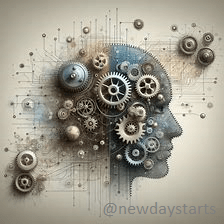In the digital era, algorithms play a pivotal role in shaping our online experiences. They determine what we see on social media, which news stories we read, and even which products we are encouraged to buy. However, this algorithmic curation has a darker side, often referred to as the “echo chamber” effect. This phenomenon occurs when algorithms selectively present information that aligns with our existing beliefs, effectively insulating us from opposing viewpoints.
The Dangers of Echo Chambers
Echo chambers pose significant risks to individuals and society as a whole. By creating a feedback loop of information, they can amplify misinformation and polarize public opinion. Here are some of the key dangers associated with echo chambers:
1. **Reinforcement of Biases**: Echo chambers reinforce our pre-existing biases, making us more resistant to alternative perspectives. This can lead to a narrow worldview and hinder our ability to engage in constructive dialogue with those who hold different opinions.
2. **Spread of Misinformation**: In an echo chamber, false information can circulate rapidly and go unchallenged, leading to widespread acceptance of untruths. This is particularly concerning when it comes to political propaganda or health-related misinformation.
3. **Radicalisation**: Continuous exposure to extreme views without counterbalance can lead to radicalisation. This is especially dangerous for young people who are still forming their worldviews and are more susceptible to being influenced by harmful content.
4. **Fragmentation of Society**: Echo chambers contribute to the fragmentation of society by creating “information silos” where groups of people only consume content that aligns with their beliefs. This can exacerbate social divisions and reduce the common ground necessary for societal cohesion.
Combating Echo Chambers
Addressing the issue of echo chambers requires a multi-faceted approach:
– **Promoting Media Literacy**: Educating individuals, especially children and young people, about how algorithms work and the importance of seeking out diverse sources of information can help mitigate the effects of echo chambers.
– **Algorithmic Transparency**: Social media platforms and content providers should be more transparent about how their algorithms function and the impact they have on content curation.
– **User Empowerment**: Providing users with more control over their feeds and the ability to easily access a variety of viewpoints can help break the cycle of reinforcement that echo chambers create.
– **Critical Thinking**: Encouraging critical thinking and scepticism about the information we consume online can help individuals recognize and challenge biased or false content.
Conclusion
Echo chambers, fuelled by algorithms, present a significant challenge to the integrity of our information ecosystem. They can lead to a polarized and misinformed public, undermining the foundations of democratic discourse. It is crucial for individuals, educators, policymakers, and technology companies to work together to address the dangers of echo chambers and promote a healthier, more informed online environment.










